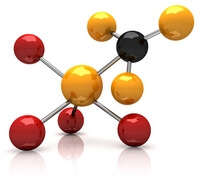Chelated Minerals in Dog Food

What are chelated minerals and why are they used in some dog foods and not in others?
Minerals are inorganic compounds that come from the earth and are naturally absorbed by plants.
Animals and humans get minerals from the plants or the plant-eating animals they consume.
Minerals are essential nutrients that a dog’s body needs to grow and function normally.
Here are a few familiar examples of common minerals…
- Calcium
- Copper
- Iron
- Zinc
By themselves, some minerals can be more difficult than others for a dog to absorb.
So, at least some of these minerals can pass through a dog’s digestive tract, wasted in the stools.
However, some minerals can be chemically combined with organic molecules, like amino acids or complex sugars (polysaccharides).
This process of attaching an inorganic mineral with an organic compound is known as chelation.
Chelated minerals can usually be identified by the suffixes added to their chemical names. For example:
- Copper chelate
- Zinc proteinate
- Iron glycinate (amino acid, glycine)
- Magnesium polysaccharide (not a true chelate)
Chelated Minerals Can Be Easier to Absorb
Not all minerals are difficult to absorb, or even need to be chelated. Yet chelation can improve the absorption of specific minerals.1
For example, chelated trace minerals exhibit an increased bioavailability of about 5 to 15 percent.2
But they can also cost more than five times more than non-chelated minerals.3
However, chelated minerals may not be the right choice for every dog. Pets at risk for copper storage disease or bladder stones, may be better off with dog foods made with regular, non-chelated minerals.4
The Bottom Line
In general, chelated minerals should be considered a welcome addition to most dog food recipes. And their presence on an ingredients list can also be a tip-off you’re considering a better quality dog food.



